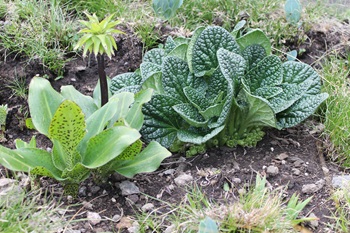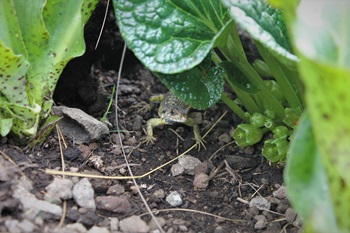

Range expansions, survival and persistence of both plants and animals, particularly in the face of climate change, are often dependent on plant-animal interactions (e.g. pollination and dispersal). Understanding how elevation, climate warming, and dispersal strategies drive both plant (native and invasive species) and pollinator responses is key to biodiversity management and climate-change mitigation strategies. Recent studies in the Maloti-Drakensberg have revealed unique pollination systems (e.g. lizard pollination of Guthriea capensis; Cozien et al. 2019), and vertical dispersal strategies in highly invasive Rosaceae species (Adams 2020, 2021; Moloi 2022). The internationally collaborative RangeX project is utilising camera traps to assess the impact of plant-pollinator interactions on the range expansion of plant species across elevations and under simulated warming treatments.
Adams, L.D., 2020. Reproductive ecology of Pyracantha angustifolia in afromontane grasslands of the eastern Free State (Master’s Dissertation, University of the Free State).
Adams, L.D., Martin, G.D., Downs, C.T., Clark, V.R., Thabethe, V., Raji, I.A., and Steenhuisen, S.L., 2021. Seed dispersal by frugivores and germination of the invasive alien shrub Pyracantha angustifolia (Franch.) C.K. Schneid. in the Free State Province, South Africa. Biological Invasions, 24, p. 2809-2819.
Cozien, R., Van der Niet, T., Johnson, S.D., and Steenhuisen, S. 2019. Saurian surprise: lizards pollinate South Africa’s enigmatic ‘hidden flower’. Ecology. 100(6): e02670.
Moloi, K.T., 2022. Reproductive ecology of an invasive Cotoneaster species in Afromontane grasslands of the eastern Free State, South Africa (Master’s Dissertation, University of the Free State).
Contact the Principal Investigator/Lead Researcher
Prof Sandy-Lynn Steenhuisen
Subject Head and Senior Lecturer in the Department of Plant Sciences
T: +27 58 718 5330
E: sandysteenhuisen@gmail.com, steenhuisens@ufs.ac.za